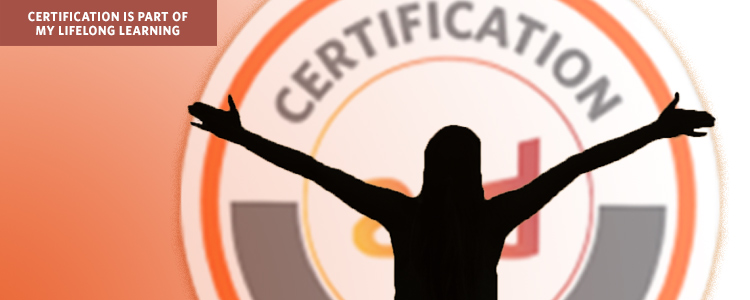
by Kris Schaeffer, CPTD
Certified Professional in Talent Development
Certified Conscious Capitalism Consultant
First recipient of the Lifetime Achievement Award, Association for Talent Develop
I was 18 when I got my first certification. I did it to double my income. I was making one dollar an hour as a college student waiting tables in the faculty dining room when I learned that I could earn two dollars an hour teaching swimming. And to qualify to teach in the school’s phys-ed department, I needed to be certified as a Water Safety Instructor (WSI).
Initially I wanted to increase my earnings, but ultimately I found more than money. I learned the joy of swimming and teaching others how to be safe in the water. Here are some of reasons that I loved this first certification experience.
Red Cross experts had developed a consistent way to execute each stroke. The more that I followed their pattern, the easier the stroke became. The scissors kick led with the ankle, not the knee. Combining two strokes – the side stroke and the crawl — into the double Trudgen enabled me to swim long distances and have enough endurance to bring back a struggling victim. There were many amateur ways to stay afloat. Following the procedures for “drown proofing” gave me – and those I taught – ease, endurance, and confidence.
All of these refinements in my own technique made swimming more enjoyable. I passed this swimming joy along to my students. The WSI also prepared me for any crisis in the water. There have been 3 times in my life when those skills helped me to rescue someone. Those skills are not used often, but when they’re needed, it’s life-saving. And that’s why the Red Cross required me to be recertified every year.
Earning my WSI had a higher purpose than making money. It made swimming intrinsically rewarding. I could save lives. I am hooked on the certification process.
I am a great fan of the Association for Talent Development’s professional certification. I’m now working on my fifth recertification. I’ve been a Certified Professional in Talent Development1for 15 years. There are many reasons that I value being certified.
Certification gives me a roadmap to being a full-fledged professional. My first ATD certification started with the competency model, a definition of ten skill areas. Today, this definition of what it takes to be a talent development professional has expanded to the capability model. The capability model provides a broader view of the profession that’s not framed only by my immediate job assignment or client engagement. A broader view of the capabilities increases my adroitness to recommend more strategic and integrated solutions because I can see the impact of what I am working on and how it affects other talent development issues.
This comprehensive view also helps me to align with other human resource professionals. For example, an assignment to develop a leadership development program requires a posse of supporters. Organization Development helps to define the values into behaviors. Change Management breaks down silos and helps to get these behaviors to all levels in the organization. Performance Management tracks actions and results that determine that leaders are implementing the behaviors that lead to better business results. (Kirkpatrick’s measurement levels 3 and 4). I can’t influence significant change alone.
The ATD body of knowledge also helps me sort through the noise of many methods, innovations, products, and jargon. I rely on the solid foundation of our profession’s thought leaders – Knowles, Kolb, Mager, Kirkpatrick, Gagne, Gilbert. This serves as a “foundation” upon which I can hang all the modifications and advances that come with progress in our profession. The meta-model helps me understand SAM vs. ADDIE. And beyond SAM and ADDIE, I understand Learning Clusters and how to use social learning and technology to ensure that skills are presented just-in-time.
I know how Gagne’s 9 steps can be put in a different sequence to create blended learning or a flipped classroom, or separated into different events to create the space needed for participants to absorb, practice, and apply what they learn. I know many different ways to make application become a part of the job that enables better performance. With a certification, I have the ability to align with the many stakeholders involved in getting the result that we all want – more skilled, nimble, and innovative talent.
Remember that one of our profession’s capabilities is Life-Long Learning. The CPTD is not a destination. It is a process. I’m still learning by working on the recertification every three years.
The recertification is a balance of various ways to learn and use your skills for others. To keep up my CPTD, I attend webinars and read books in the new capabilities. I conduct Instructional Design workshops for my Chapter. And as needs changed with the pandemic, I adapted the Instructor-Led Training workshop into Virtual Instructor-Led Training.
Today I contribute to my profession by being actively involved in the Chapter’s year-long programming. Each month, as part of the Holistic Learning Design Special Interest Group, led by Renée Remy, we focus on one of the capabilities. In another initiative, my co-designer, Jenny Niec and I created a mini-workshop to teach how to convert organizational values into leadership development.2.
Certification gave me an inner strength. It’s the affirmation of my know-how. I admit that that no prospective client has asked whether I have a CPTD. But then, they don’t need to ask. It shows up in my work.
_____________________________________________________________
1. This was originally the CLPD – Certified Professional in Learning and Performance
2. This was the content of the August 2021 chapter program. Chapter members can access the recording and handouts in the Members Only section of this website.
This post was adapted from Kris’ original blog post for td.org in July 2021
